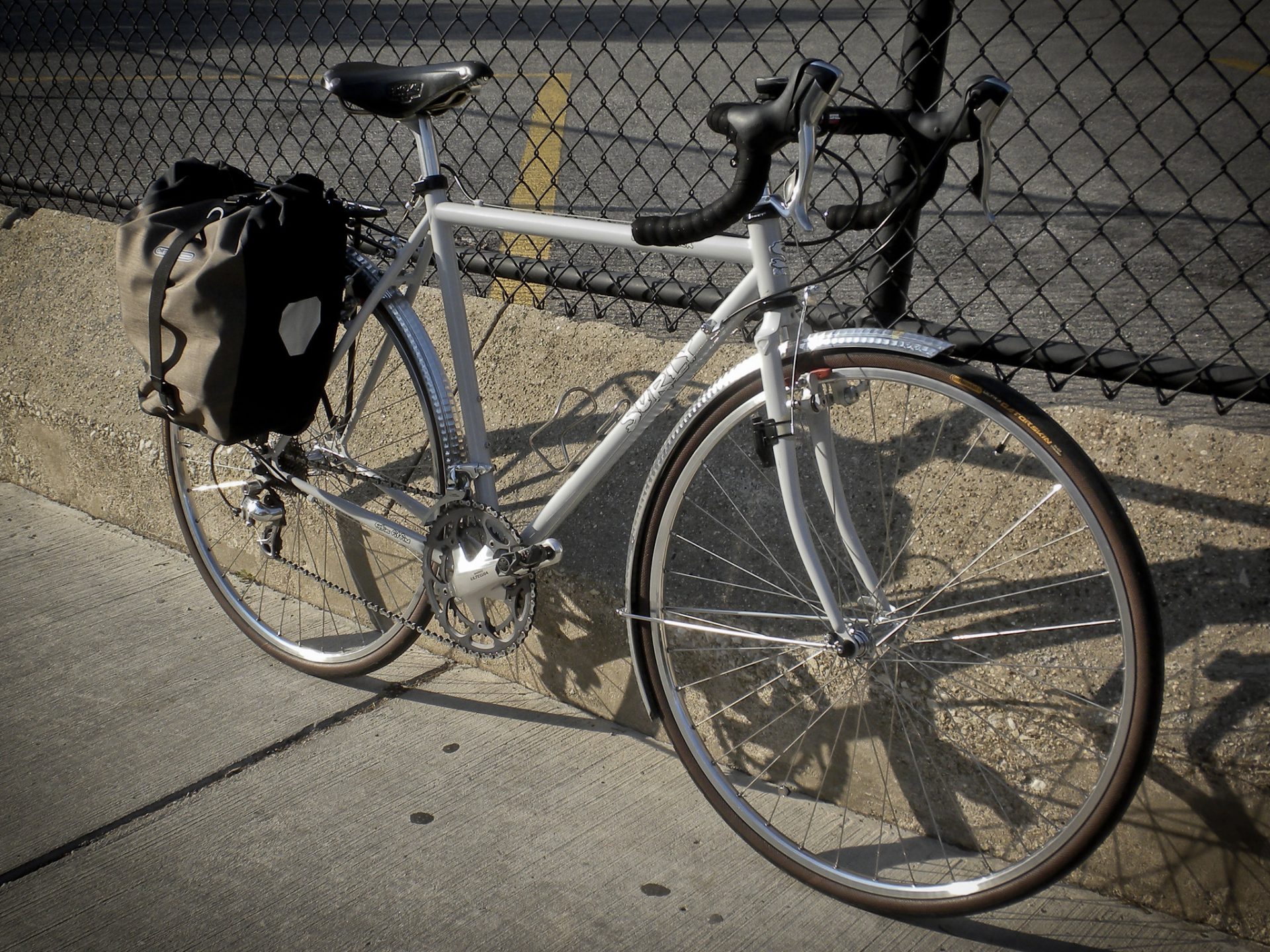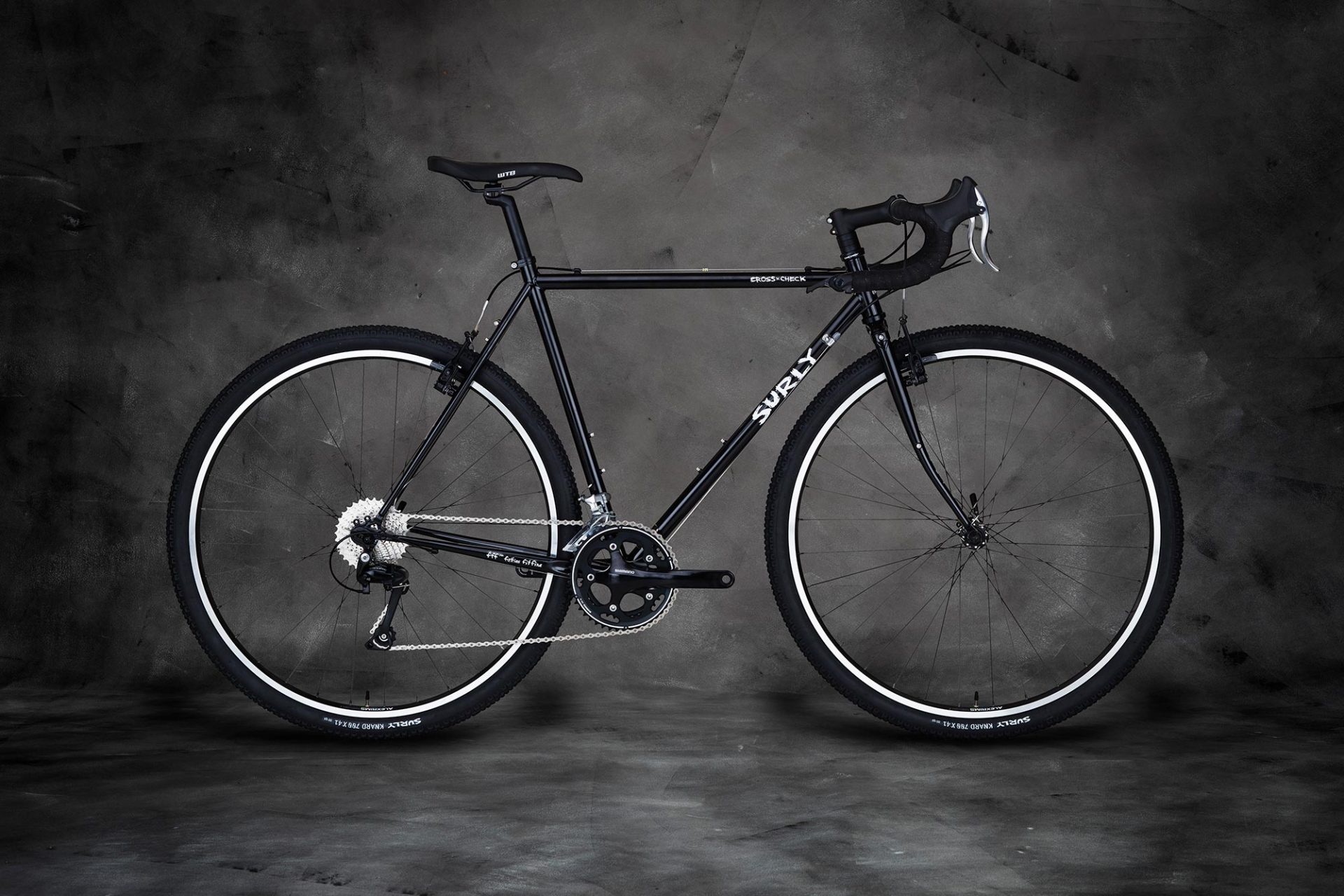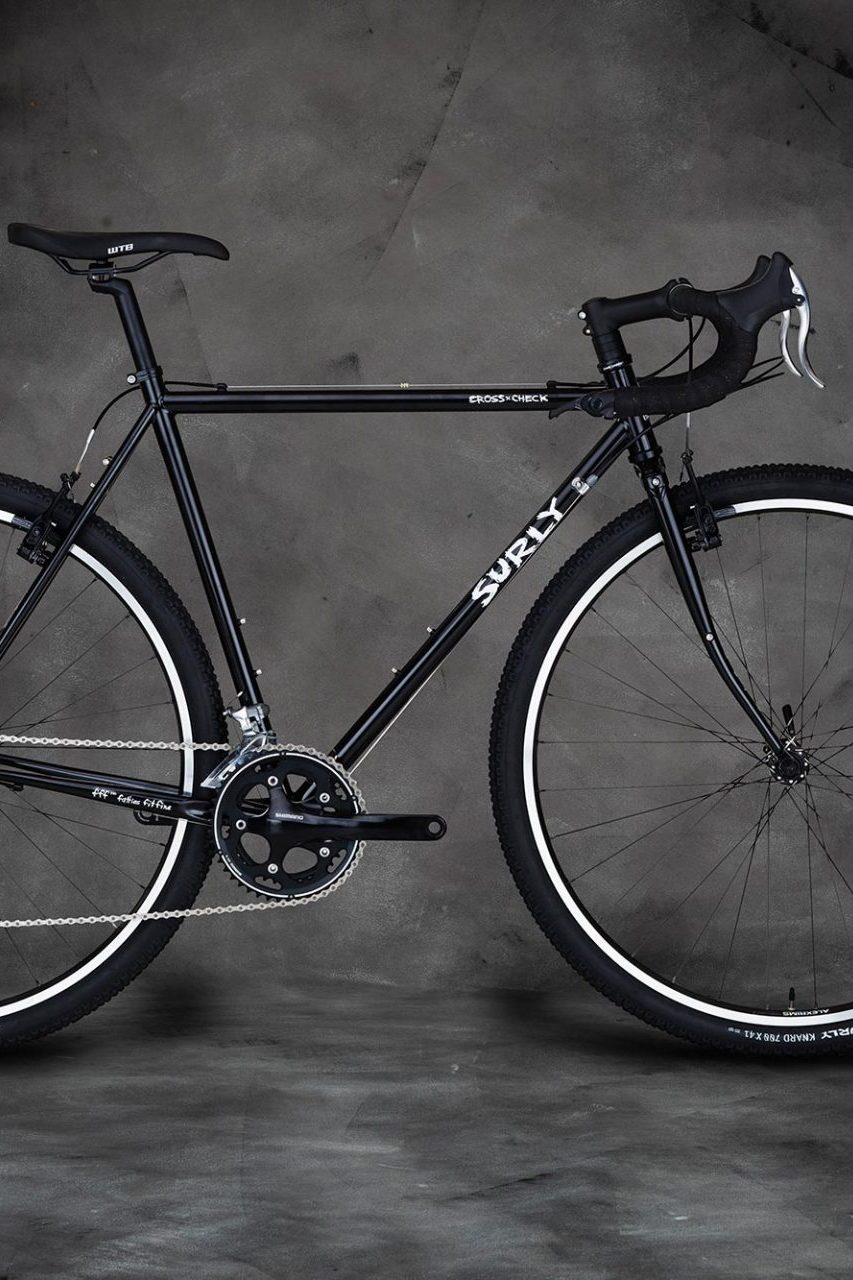Death comes to us all. This certainty stalks all humans, animals, and consumer goods – and sometimes, it stalks bicycles too.
Some models are a flash in a pan, existing in a brand’s lineup for only a short time; others delay the inevitable for years. Few last decades. This week Surly’s beloved, venerable Cross-Check was discontinued, with the news broken by prolific memer Bicycle Pubes and confirmed by the removal of the product from Surly’s webpage.
Surly, founded in 1998 as an in-house division of Minnesota-based wholesaler Quality Bicycle Parts, has long had a reputation for aggressively utilitarian bikes, and it was the Cross-Check – the company’s second model, introduced way back in 1999 – that best typified this approach. It was, like all of their bikes, a chromoly frame that was built to take a beating, and it could be configured in any number of ways by its owners – the Cross-Check was a town bike, a touring bike, a cyclocross bike, a road bike, a pub bike, a gravel bike 15 years before ‘gravel bikes’ began building market momentum. In an industry that’s increasingly producing hyper-specialised tools for a task, the Cross-Check brought something different to the table: it was, in the company’s words, a bike built “to keep the price tag low and the usefulness high,” pursuing practicality over “speed, weight, or some other frivolity.” Or, simply, the pragmatic ideal of a bicycle.
There are (or, were) no obscure standards to be found on the Cross-Check: just an English-threaded bottom bracket, a round 27.2 mm seatpost, rim brakes, generous tyre clearance, and mounts for fenders and racks. One of the only quirks of its design was a democratic one: to allow the use of either road-spaced 130 mm rear hubs or the MTB-spaced 135 mm, the rear dropouts were set at 132.5 mm so the flexible steel could bend to accommodate either (in fact, plenty of people would squeeze them down for 120 mm track rear hubs in the heyday of the urban singlespeed, too). The whole thing was built in reliable 4130 CroMo, the front triangle double-butted, with the tubes TIG-welded together in Taiwan and sprayed with one of a number of simple single-colour paintjobs. Surly’s capable contractors would whack on a couple of decals – including ‘Fatties Fit Fine’ on the chainstay, to reflect Surly’s at the time pioneering tyre clearance (700×42 mm! In 1999!)– and send each of them off into the world, where long lives of service would begin.

For a bike as profoundly unflashy as the Cross-Check, they often stood out on the bike racks and signposts of cities in the way that they’d mutate from one Cross-Check to the next. Because they could be built up in any number of ways, they were, and tended to be beautifully flawed reflections of the humanity of those riding them as a result. The colours were never grabby – in fact, they were often drab – and the builds seldom high-end, but I’d argue there’s more to discover in the character of a bike with a weird blend of components and a milk crate cable-tied to a rack than some pristine, bland, big-brand bike.
Most importantly, they just kept going. For all the Cross-Checks that were crossing cities, there were plenty that crossed continents. They could be fixed pretty much everywhere for whatever might go wrong with them, which wasn’t much. What they lacked in performance, they made up for in practicality. They were optimised only in pursuit of what you would want in a bike like this: dependability, functionality, and reliability.

I reached out to Surly with some questions – how many were sold over the years, what led to its demise, etcetera – but didn’t hear back. But in what seems to have become a communal outpouring of emotion from a certain slice of the bike riding pie, there are some things that I can glean: that it was a gateway bike for many people, that it made many people very happy, and that it will be missed. Beneath the above-linked posts there are tales of bikes passed down from parents to children, built with any number of configurations, painted and repainted, broken and repaired. The Surly Cross-Check in its constancy and variability was a reflection of life itself. This week, after almost a quarter century of existence, it ended – as all lives must.
For a basic steel bike, that’s a heck of a legacy.
What did you think of this story?


